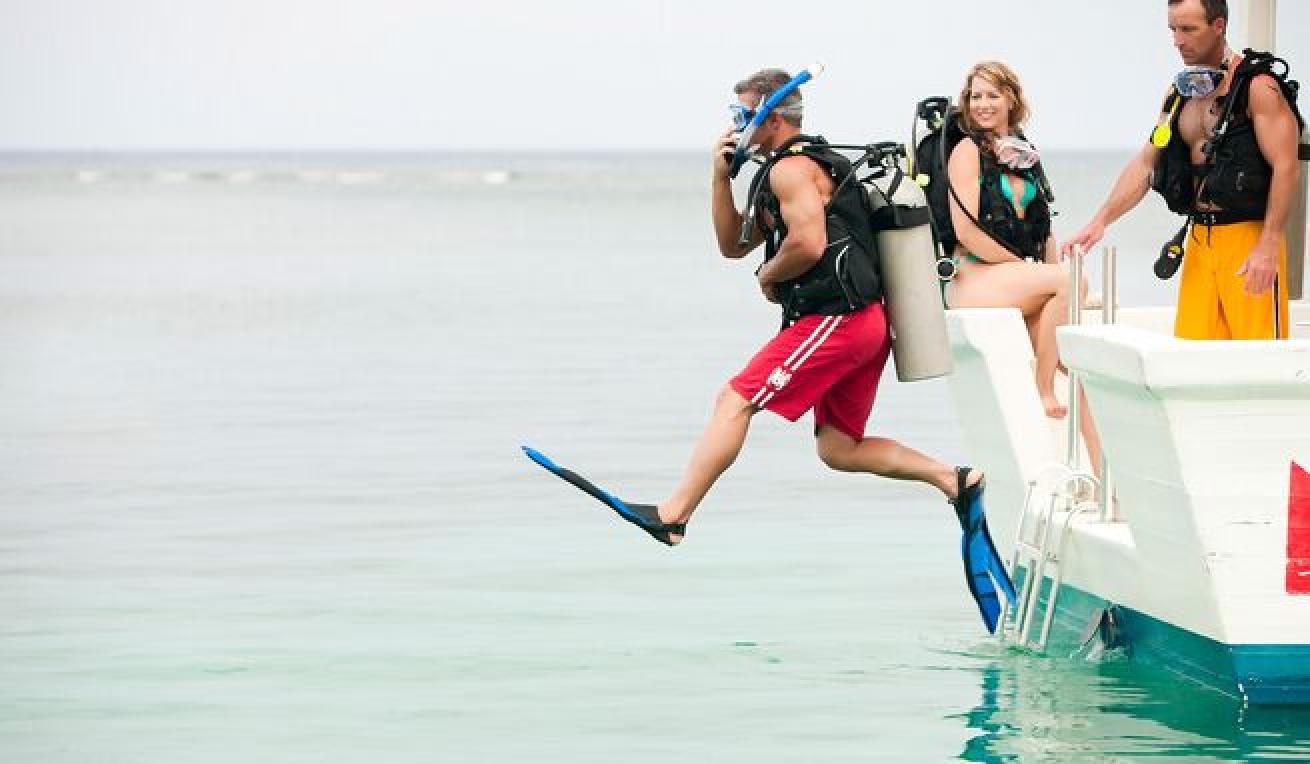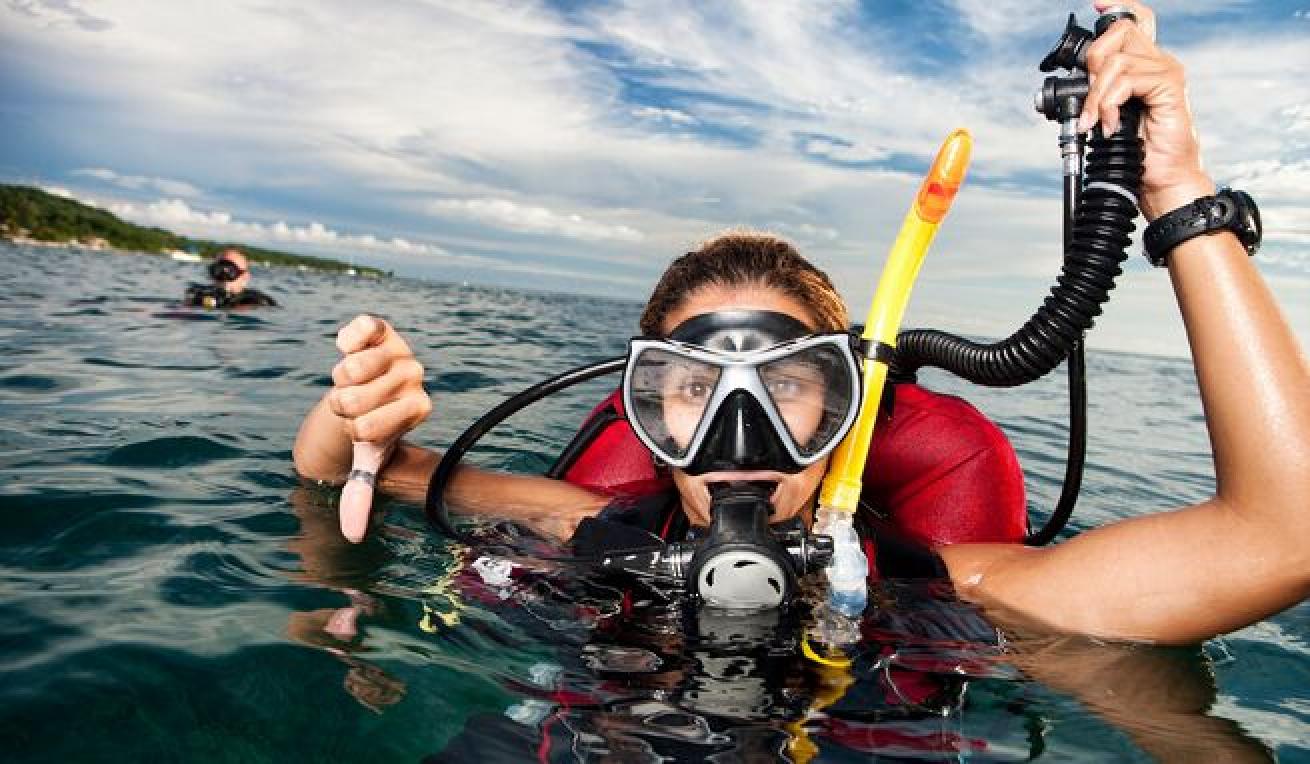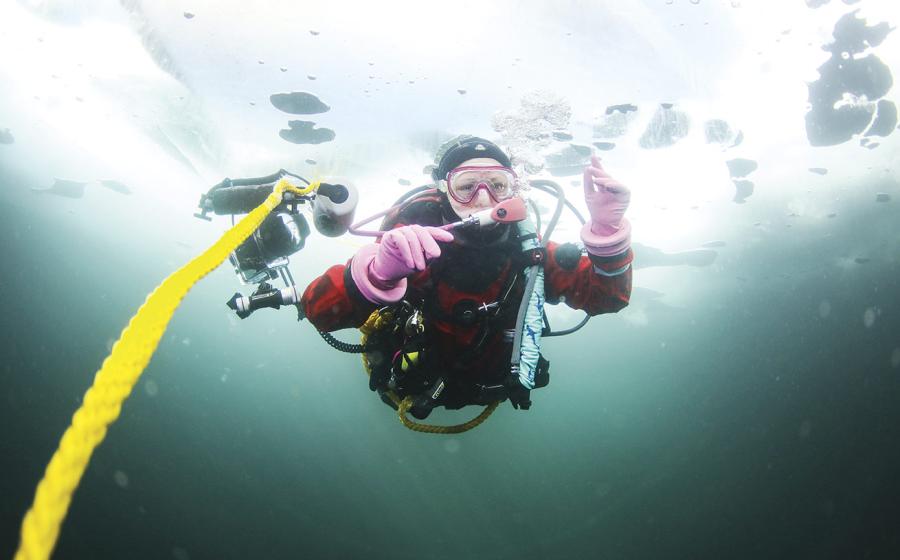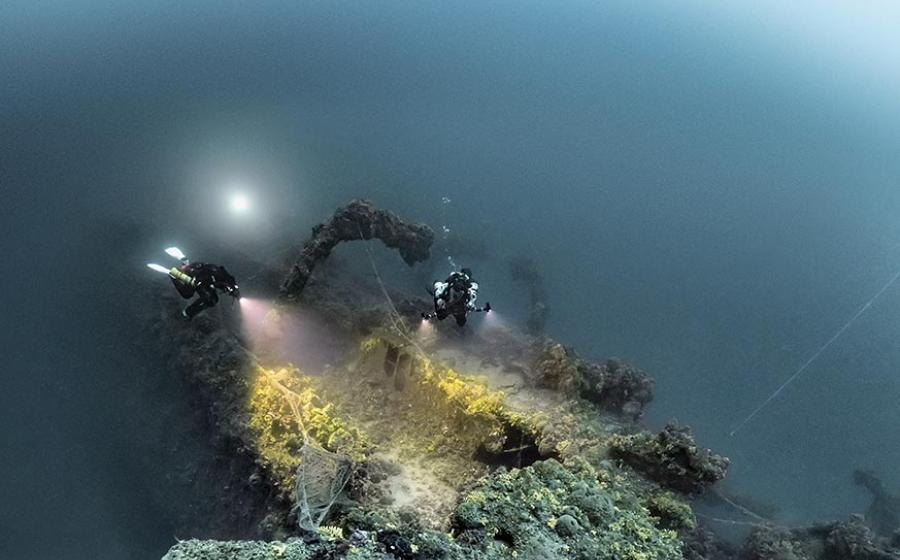How to Make the Perfect Scuba Diving Giant Stride
We divers make giant strides into the water all the time when diving from day boats and liveaboards with stable platforms, as well as docks, but after a video featuring giant-stride fails went viral, we thought we’d break the perfect giant-stride entry down, step by step.

iStockThe perfect dive begins with a perfect giant stride.
Along with the backroll entry, which divers do when the boat has no platform, the giant stride is the easiest, fastest and usually safest way to begin your dive.
Many of us who were lifeguards once learned the giant-stride entry from a pool deck — it’s a way to get into the water quickly, while keeping your eye trained on a struggling or drowning swimmer. But it does differ from the giant stride we’re taught during scuba diving training — as they hit the water, lifeguards also sweep both arms forward and use a scissor kick to help keep them from going completely underwater. This is what helps keep the head above the water. They begin to swim toward the swimmer — either a crawl or breast stroke — also with their head high and out of the water. It’s specifically designed to allow a rescue swimmer to keep in visual contact with the victim.
When scuba diving, it is OK to briefly submerge and then pop back to the surface (as long as you haven’t been directed to do a negative entry, aka “hot drop”). The preparations you make before striding off the boat or dock, as well as the habits you develop as you make the entry, will keep you from ever starring in a YouTube video of giant-stride fails. Here are our tips:
1) Make sure you follow the boat crew’s dive briefing about entering the water. They will often specify which side of the stern they want you to enter (some boats have a side door with swim platform) and whether to don your fins at your station or at the entry point.
2) Gear up when the dive boat tells you to and then perform a buddy gear check. Is your mask defogged and ready? Your buddy should ensure that your BC’s quick releases and toggles are free from entanglement. Make sure your weights are in place and secure. Have your buddy check your BC’s tank band. Is it secure? (Tip: If this is the first dive of the day and your BC is completely dry, soak the tank band in water before attaching your BC to the cylinder. This expands the webbing material so when you strap your BC onto a tank, you can be sure it’s nice and snug.) During your buddy check, stand up and ask your buddy to give your cylinder a firm tug to make sure it’s secure. Is your air on? Ask your buddy to double-check, and then breathe from your primary regulator while looking at your SPG. Never assume the boat crew has turned your air on. Add air to your BC, which will help you remain positively buoyant at the surface. Finally, make sure you have all the accessories you need for the dive, and that they’re properly clipped off or stored. If you do need to cross the deck while wearing fins, shuffle backwards to avoid tripping. It helps to have one of the boat crew nearby to help steady you if the seas are rough.
3) Once you reach the entry point, make sure your mask is on and put your regulator in your mouth. Take a few more breaths to ensure your air is on.
Related Reading: How Scuba Diving Affects Your Breathing

iStockOnce you’ve made sure you and your buddy are ready to dive, signal to descend.
4) Make sure you are steady (the boat crew will usually be assisting). Hold onto a railing if there is one. Again, follow the crew’s instructions, and make sure the entry point is clear. If a diver entered the water just before you, make sure they have moved out of the way.
5) Once the crew and you have determined it’s safe for you to enter, use the palm of your right hand to hold your regulator in place and the fingers of the same hand to hold your mask in place. If you’re wearing a weight belt, use your left hand to secure the buckle of the belt so that the force of entry doesn’t cause it to come undone. If your BC has integrated weights, press your left hand on the BC in the waist area.
6) Look out straight toward the horizon, and then simply step out from the boat far enough to ensure that your cylinder clears the platform’s edges.
Related Reading: How To Pick a Scuba Diving Instructor
7) You should float, but if you begin to sink, add more air to your BC until you are positively buoyant. Signal to the boat crew that you’re OK. This is a good time to do a buoyancy check to make sure you are properly weighted.
8) Perform your final “cross-check.” If the boat crew has asked everyone to hold onto a tagline so the group can descend together, then do that. If you’re buddy diving and able to begin the dive when you and your buddy are ready, get into position near your buddy. Either way, make sure you’ve performed a final surface check to make any gear adjustments before descending. For example, if your BC was completely dry, you may find that the force of entry has loosened your BC’s cummerbund and needs to be adjusted or that some strands of hair are preventing your mask from sealing properly. Take your time to fix these minor issues before descending.










